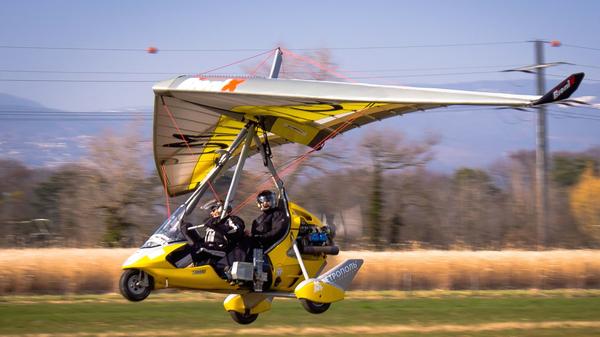Hyperspectral imaging of Lake Geneva

© 2014 TOPO
The latest field campaign of the Leman-Baikal project that was taking place over lake Geneva earlier this month has led to the creation of high-resolution hyperspectral maps of several regions of the lake’s surface. The new data will allow EPFL researchers to further the understanding of hydrological and biological processes in the lake.
The Léman-Baikal project constitutes an international Swiss-Russian collaborative research initiative in the field of physical limnology using ultralight aircraft. The primary aim of the project is to conduct a comparative study of the functioning of Lakes Léman (Switzerland) and Baikal (Southern Siberia region of Russian Federation). The scientific objectives of the project include the analysis of hydrological processes, such as the runoff dynamics of both natural and anthropogenic origin, lake energy balance, and the study of processes pertaining to the land-water and air-water interfaces in lakes.
This multidisciplinary project regroups different laboratories within EPFL: Geodetic Engineering Laboratory (TOPO) / Laboratory of Geographic Information Systems (LASIG), Physics of Aquatic Systems Laboratory - Margaretha Kamprad Chair (APHYS), Ecological Engineering Laboratory (ECOL), Wind Engineering and Renewable Energy Laboratory (WIRE), Princeton University in collaboration with the Environmental Fluid Mechanics and Hydrology Laboratory (EFLUM) and the Laboratory of Cryospheric Sciences (CRYOS).
Hyperspectral remote sensing
Hyperspectral imaging is a method of optical sensing across a large number of narrow electromagnetic spectral bands. The resultant information allows for an accurate and precise identification of materials, as well as for a characterisation of their chemical and biological properties based on the analysis of their spectral signature. As part of the Leman-Baikal project the researchers of the TOPO laboratory have developed and deployed a multi- and hyper-spectral remote sensing platform, which is optimised for observations of both land and water surfaces from an ultralight aircraft. The platform is comprised of four cameras, auxiliary position and orientation sensors, as well as data recording equipment.

Orthorectified and georeferenced hyperspectral map of the mouth of river Rhône

Ultralight plane (ULM) with TOPO remote sensing equipment taking of from the Prangin aerodrome.
For more information please see http://www.elemo.ch/ulm
